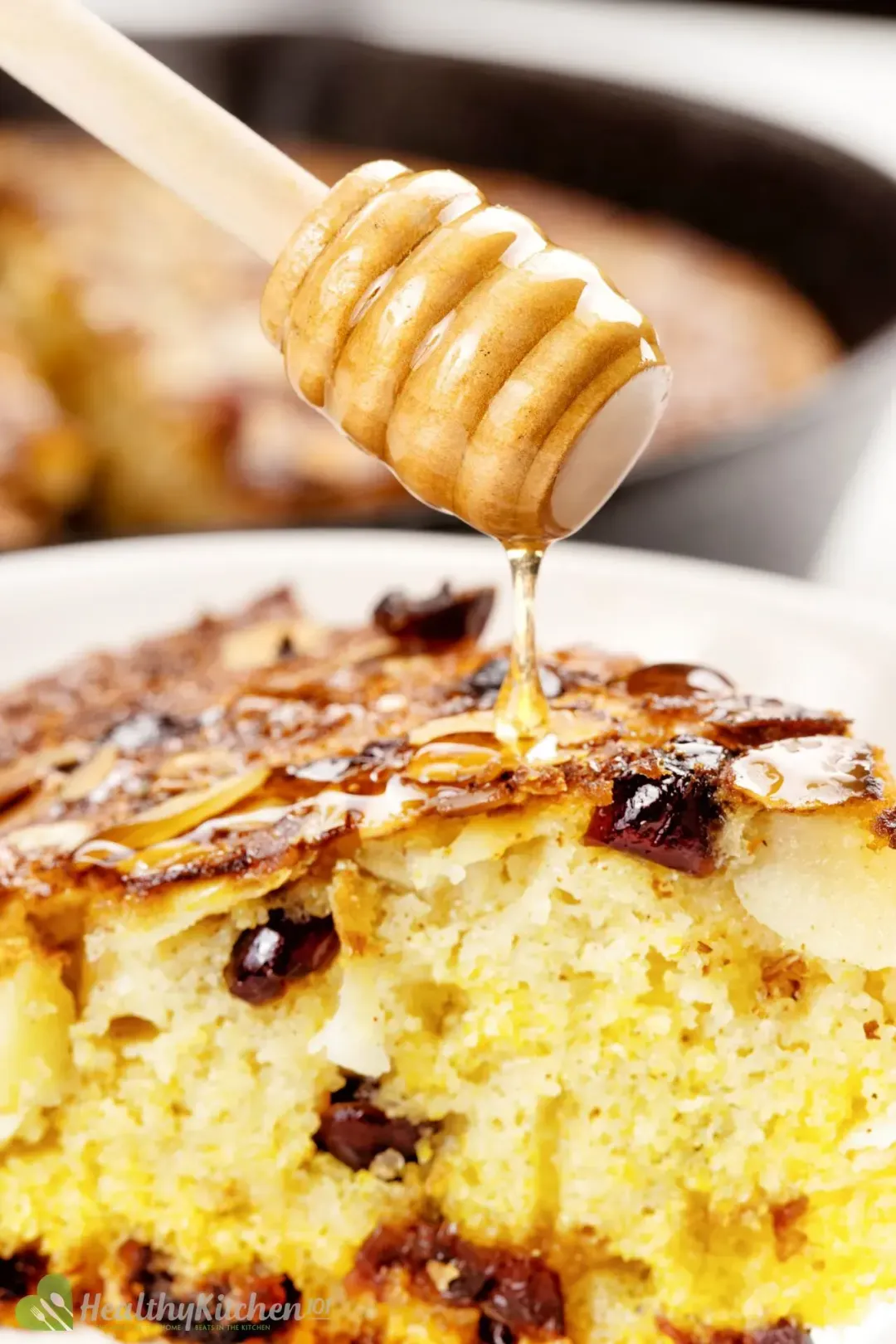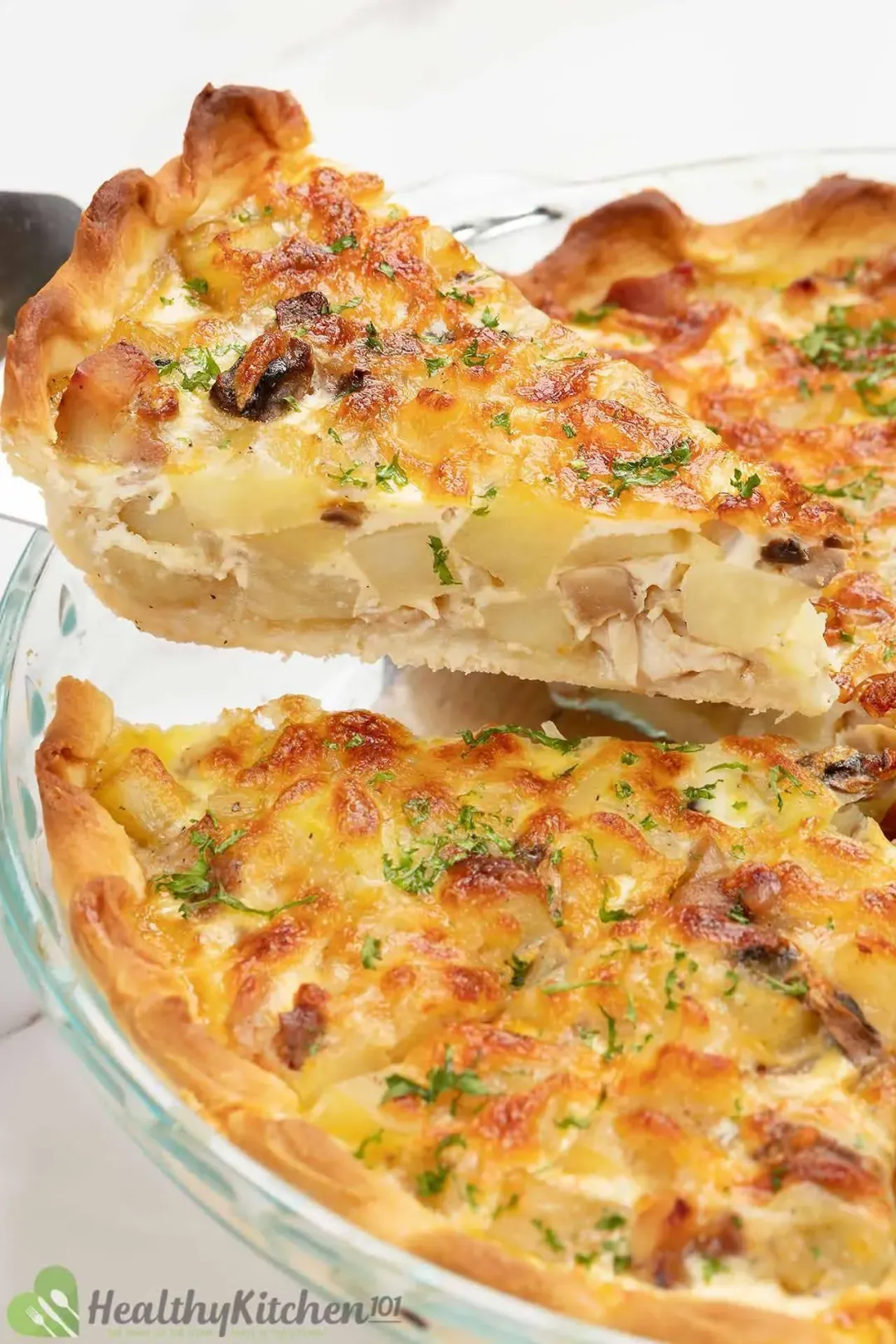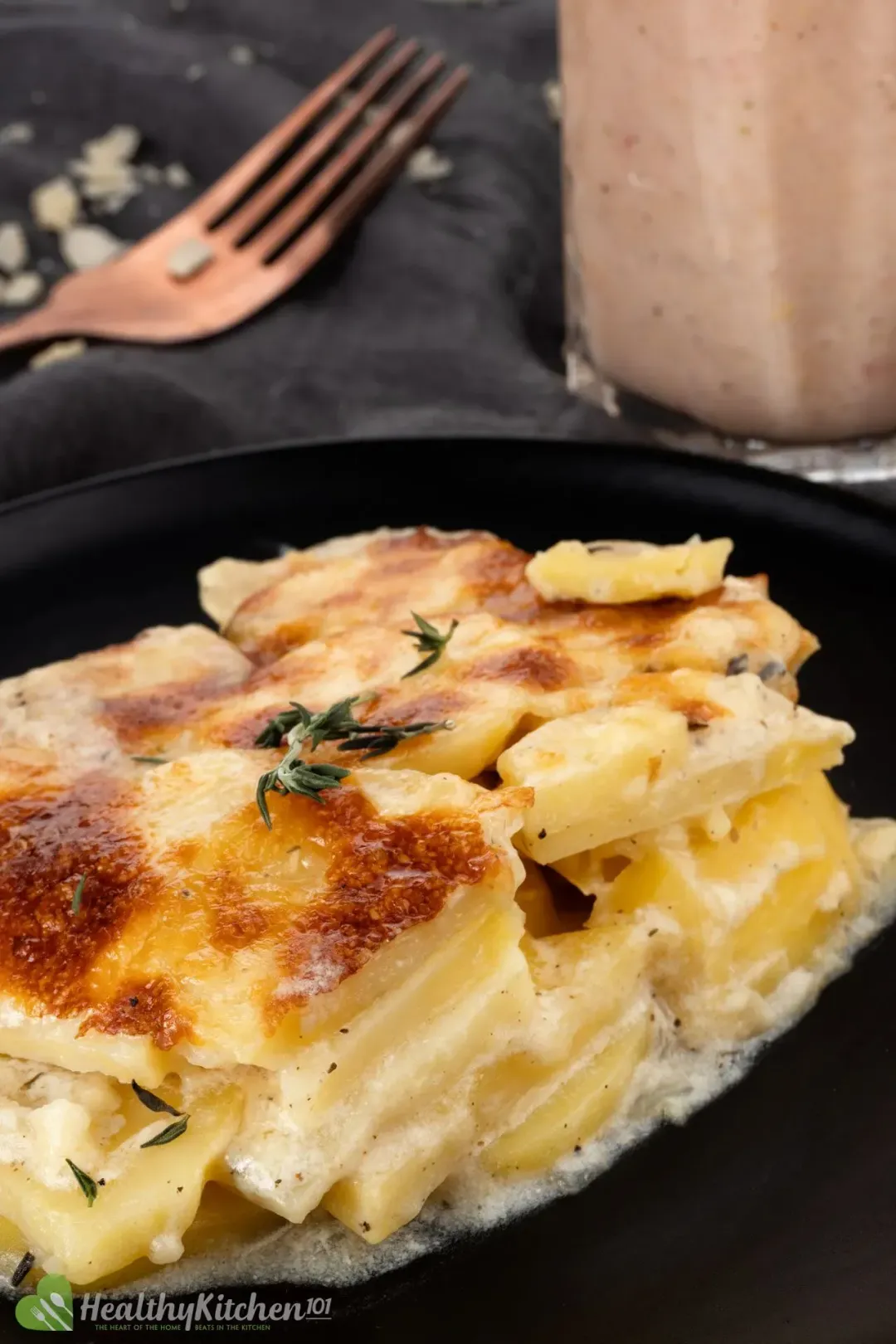To some people, the Southern cornbread recipe is not only a side dish, it is American heritage. The golden-brown exterior combines with buttery moist fruity interior making the Southern cornbread recipe a perfect dessert or even a side dish for almost any meal. You can serve it with butter for breakfast, crumbled into soup for lunch, or serve as a side with pork chops for National Homemade Bread Day (November 17).
What Is Cornbread
Cornbread has been made for hundreds of years and is considered a staple of Native American cuisine. Corn originated in the Americas and has been grown and been a part of Native American’s diets for thousands of years.
Original cornbread seems to be a mix of ground corn, water and salt but later when European settlers arrived and brought with them different recipes from their own cultures more ingredients got added. The popularity of cornbread spread in the Southern and Mid-Atlantic region of America.
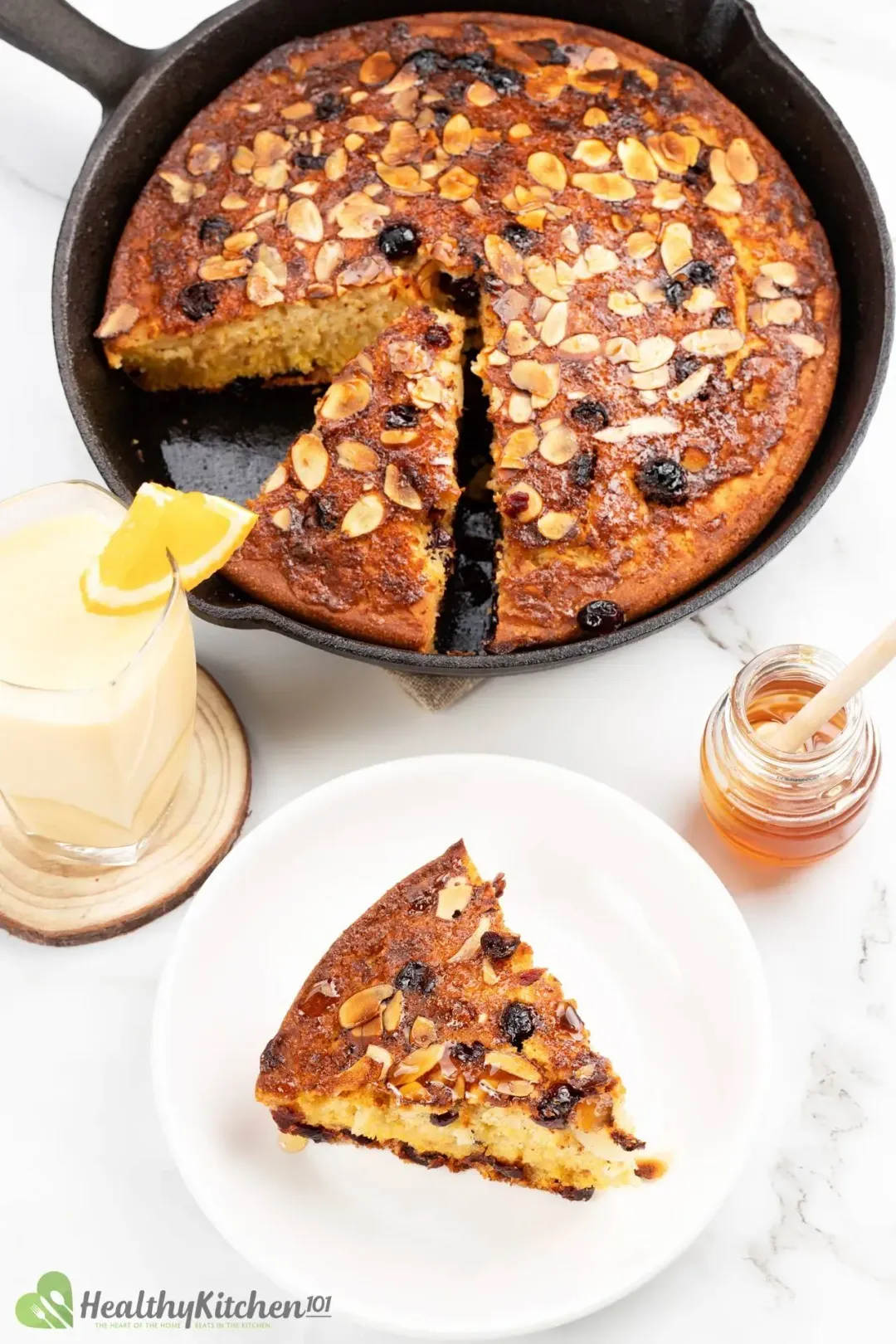
Cornbread is a quick bread made from cornmeal and there are many different variations depending on where you live and what you have available. Some include:
- Hoecakes: this is one of the simplest cornbreads which is made from only 3 ingredients: cornmeal, water, and salt. It’s originally baked in an iron pan called a hoe; now, people cook it in a skillet.
- Jonhnycakes: Johnnycakes have a thicker texture than hoecakes because they have added ingredients like wheat flour. The modern version can include milk and salt, and can also be sweetened. As for the topping, this cake can be served like pancakes with honey, maple syrup, or fruits.
- Hushpuppies: hushpuppies are small, deep-fried balls that are made from cornmeal batter. Some recipes contain chopped onions and jalapeno peppers. Since they are a deep-fried savory dish, people often serve them as a side dish with seafood.
- Baked cornbread: this type of cornbread is a common dish in America. Baked cornbread batter contains cornmeal, wheat flour, eggs, and milk or buttermilk. This dish can accompany chili, barbecue, meats and soups, or be a breakfast option. Baked cornbread recipes differ between the Northern and Southern parts of the US in terms of ingredients and their quantities in the batter.
Northern and Southern Cornbread
Native Americans were the first to make cornbread long before the Europeans set foot on the Americas. Corn pone – the earliest version – was made from a simple batter of cornmeal, water, and salt, and cooked in an iron skillet directly on heat.
Over time, people enhanced basic pone by adding buttermilk and baking soda. Then, eggs, butter, and baking powder made their way into the cornbread mixture.
Cornbread is considered a staple in many American homes. Each person has a different opinion about what their favorite type is. Is it sweet or savory? Do you need to add sugar or cheese and bacon? It can be confusing when it comes to the original cornbread recipe.
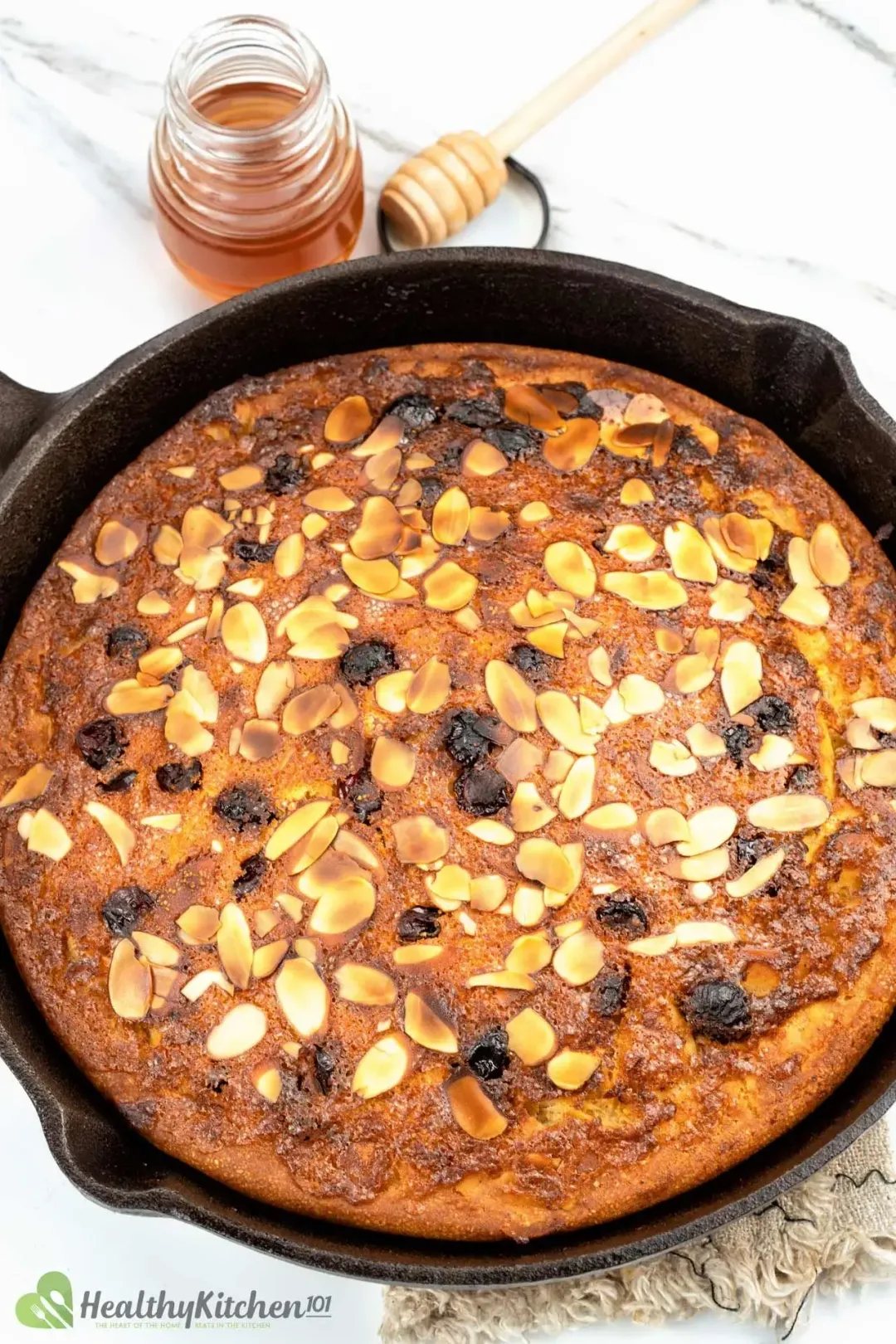
This iconic Southern cornbread uses a significant amount of sugar and butter while the Northern version sometimes uses none at all.
Aside from being sweeter than Northern cornbread, the Southern bread calls for more eggs, which produces a more buttery finish and a cakier texture. The Northern style, on the other hand, is dense, has a much stronger corn taste, and is usually flavored with bacon grease, making it a perfect side for barbecues.
Is This Recipe Healthy?
Containing flour, sugar, and dairy products, cornbread is full of carbohydrates, added sugar, and saturated fats. However, there are several ways to make the bread healthier than it sounds.
- Reduce the amount of added sugar: Apart from sweetening the baked goods, sugar also helps to form the structure of the cake. We limit the sugar in the recipe as much as we can, so that the cornbread is still delicious while not exceeding the recommended added sugar intake guidelines.
- Pay attention to the sodium: Salt in the recipe acts as a flavor enhancer which builds layers of flavor in the cornbread. We try to keep the level of sodium to a minimum by using only ¼ teaspoon of salt.
- Nutritious add-ins: To improve the nutritional profile of the dish, you can include some healthy additions of your choice . Nuts are a great source of protein while dried fruits can help to add more fiber.
1. Calories
A serving of our cornbread recipe contains 465 calories. This number may sound a lot, but for a nutritious breakfast, you need about 600 calories.
We recommend having cornbread with milk or juice to reach that number.
2. Carbs
There are 71 grams of carbohydrates, which is 26 percent of the average daily intake in each serving of this cornbread recipe.
Ingredients You'll Need
A typical cornbread recipe contains half cornmeal, half wheat flour, milk or buttermilk, eggs, leavening agents, sugar, and salt. Depending on the regional cuisine, cornbread can be sweet or savory.
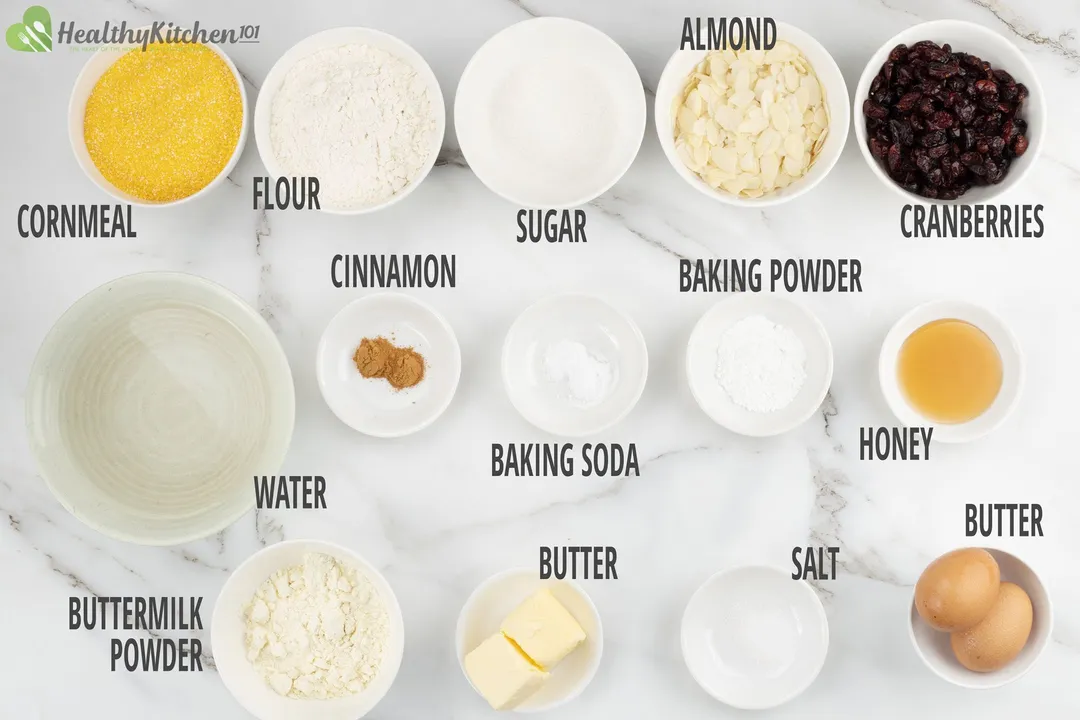
How to Store
Depending on the way you store it, you can extend the lifespan and maintain its freshness. You can keep it one of two ways for shorter term storageThere are some possible methods to store cornbread:
- At room temperature: wrap your cornbread in plastic wrap and place it in a cool place, which helps prevent it from drying out. If your cornbread develops mold or a sour smell, don’t try to eat them. We recommend using cornbread within 2 days after baking.
- In the fridge: after letting your cornbread cool off, wrap it in a plastic wrap or place in an airtight container. This method can keep your bread fresh and tasty for up to 1 week. After a week, your bread begins to lose its flavor, and either dry out or get some excess moisture, so it’s time to throw it out.
How Long Does It Last?
A freshly baked cornbread can last up to 2 days at room temperature without any preserving agents. We don’t recommend leaving your cornbread out, but if it is the only option you have, go for it.
During this time, you should keep it in an airtight container, so that your bread can conserve its moisture and freshness.
Can You Freeze It?
Yes, cornbread can be stored in a freezer to extend its lifespan for up to 3 months. You should let it cool down completely at room temperature before storing it.
You should wrap it in foil, zip bags, or a container that can keep its shape intact so that you have delicious pieces ready anytime you fancy some.
How to Reheat
Oftentimes, you can’t finish your cornbread in one sitting and may have some leftover slices. Warming them up is easy if you have the know-how:
In the oven: the oven is always our best choice for any type of bread. All you need to remember is to bake them at a suitable temperature, usually at the same baking temperature as when you made it.
In the microwave: using a microwave can shorten the time it takes to reheat your food. Therefore, you should go with 1-2 minutes first and pay attention during the heating time.
What Can Be Served With Southern Cornbread?
To be honest, cornbread tastes amazing with a myriad of options. You can use the basic recipe and try to expand your culinary experience with new combinations. Here we’ve come up with some of our favorite accompaniments that go with cornbread.
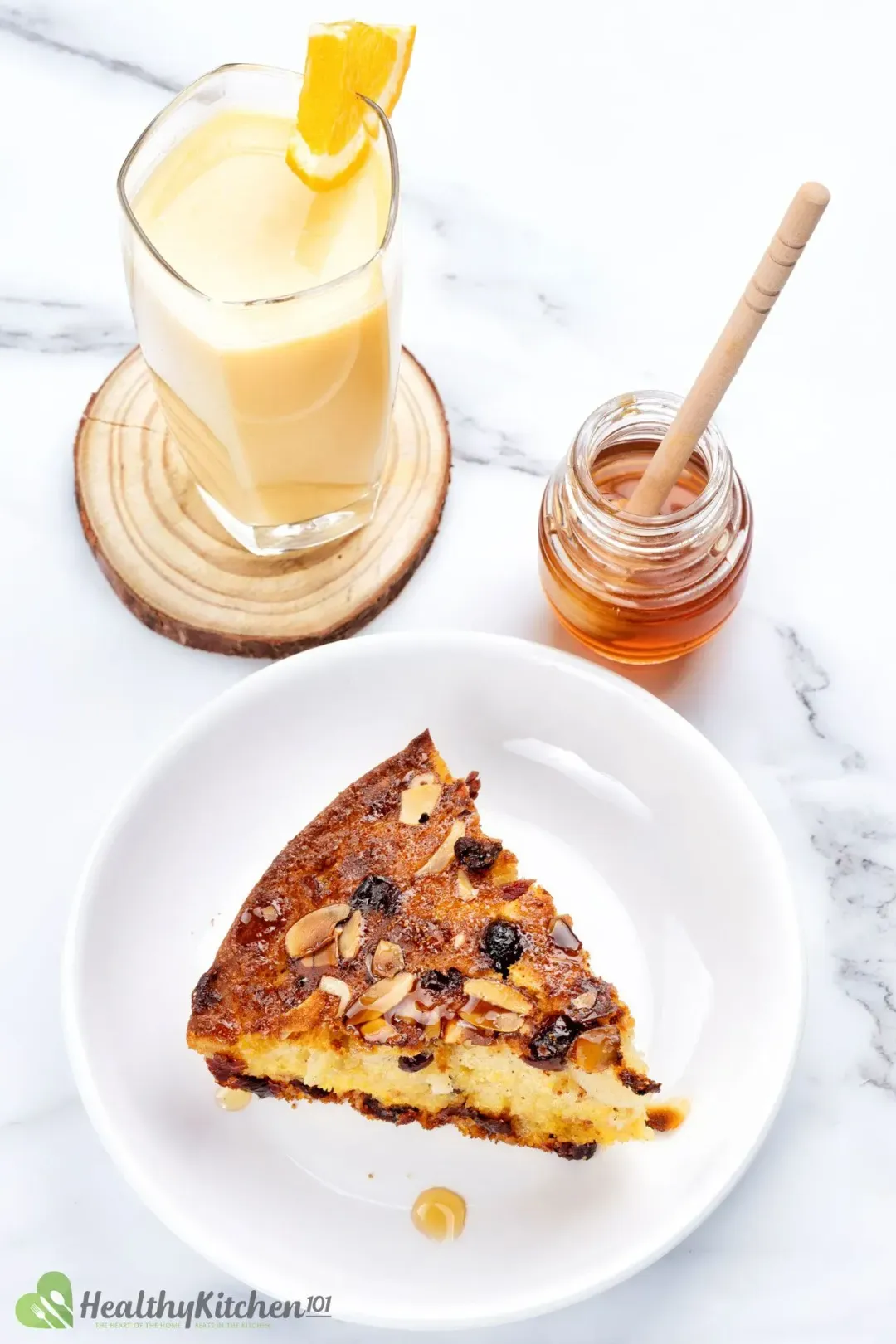
Chili: chili is the most common side to eat with cornbread for good reason. The spicy flavor of chili goes perfectly with the sweet taste of cornbread, creating a combination that is sure to please.
If chili isn’t your cup of tea, other dishes such as beans or stews work just as well.
Milk: if you want a healthy start to the day, a glass of warm milk with cornbread is a great combination for breakfast. You can try dipping your cornbread in the milk. The crisp exterior of the bread and creamy milk are truly delightful together.
BBQ: instead of roasted vegetables or mashed potatoes, you can try some cornbread as a side dish. There’s a wonderful contrast between the sweet yet savory taste of the bread and the smoky and spicy flavors of BBQ sauce.
This combination assures you of a hearty meal and gives you all the energy you need for a hard day’s work (or after a hard day’s work).
Ice cream: in some cuisines like Mexican, people serve cornbread as dessert. Our top flavors are vanilla, corn, and mango. But it’s really up to you. Go wild and enjoy cornbread with any of your favorite ice cream flavors!
Cornbread is a wonderfully versatile dish. You can bake it and then serve as either a breakfast, side or dessert. To meet the recommended daily intake of calories for breakfast, we serve our cornbread with a cup of milk.
If you are looking for a healthy cake recipe, our banana bread is a great option.
Southern Cornbread Recipe
Whether served with butter or honey, this healthy cornbread recipe is tender, moist, and buttery with a well-balanced corn flavor. You can convert it into sweet or savory depending on what you mix into the batter. This one-pan recipe is so versatile; an ideal base to create endless variations!
- cook TIME 40 mins
- prep TIME 10 mins
- total TIME 1 hr
- INACTIVE TIME 10 mins
- COURSE Breakfast, Dessert
- CUISINE American
- SERVINGS servings
- CALORIES 465 kcal
INGREDIENTS
- 1 cup all-purpose flour
- 1 cup fine-grind cornmeal
- 2 large eggs
- 5 tbsp unsalted butter
- 6 tbsp buttermilk blend
- 4 tbsp sugar
- 1/4 tsp salt
- 1 1/2 tsp baking powder
- 1/2 tsp baking soda
- 1/2 tsp cinnamon
- 1 1/2 cups water
- 1 cup dried cranberries
- 2 oz sliced almonds
- 1 tbsp honey
INSTRUCTIONS
Preheat the oven to 425°F.
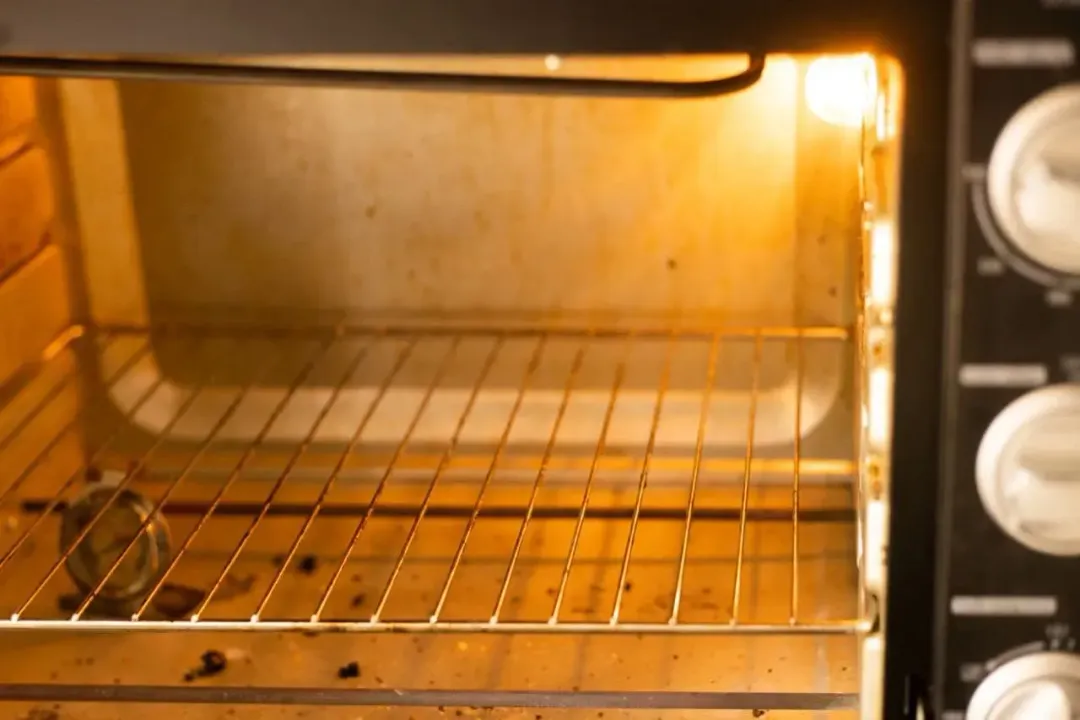
Heat 5 tbsp butter in a cast-iron skillet over low heat until melted. Pour the butter into a bowl and set aside.
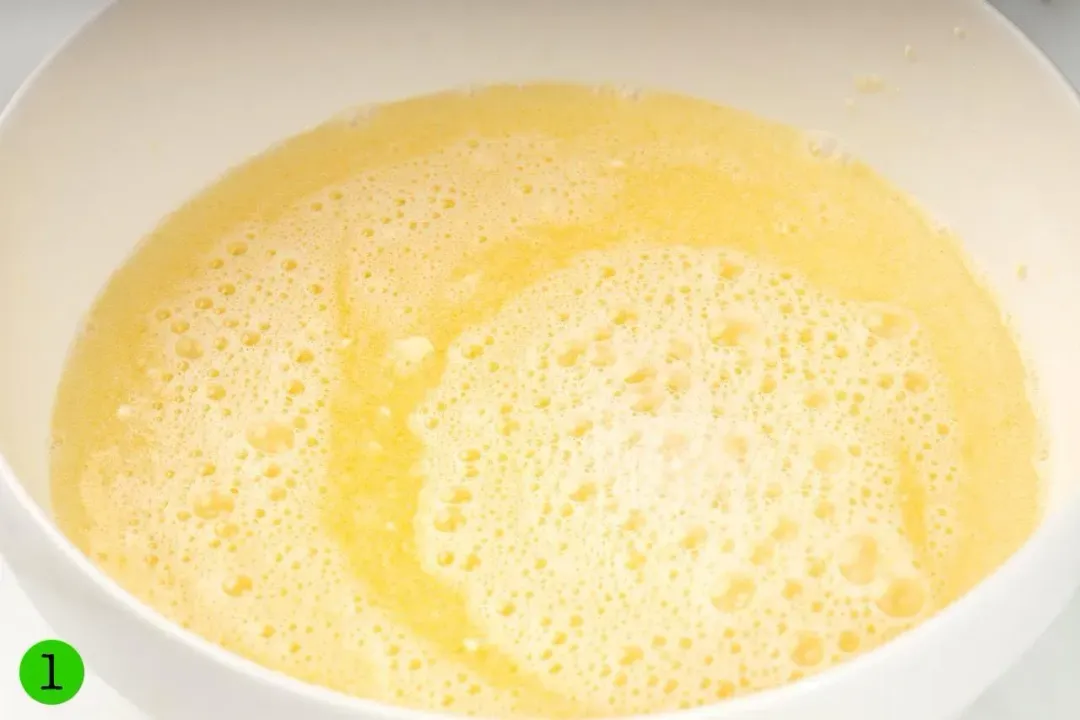
In a medium mixing bowl, whisk 1 cup flour, 1 cup cornmeal, 1 1/2 tsp baking powder, 1/2 tsp baking soda, 1/4 tsp salt, 4 tbsp sugar, and 1/2 tsp cinnamon. Set aside.
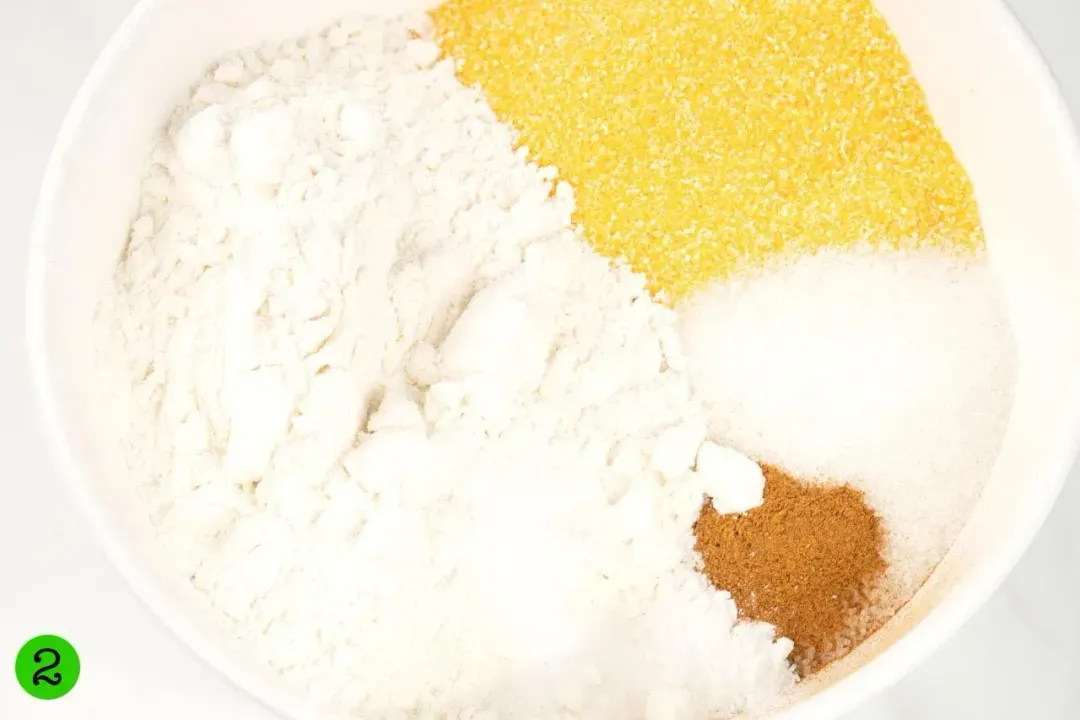
In another big bowl, whisk 6 tbsp buttermilk. Blend in 1 1/2 cups water. Then add 2 eggs, mix together well to combine. Pour in slightly less than half the amount of the cooled melted butter.
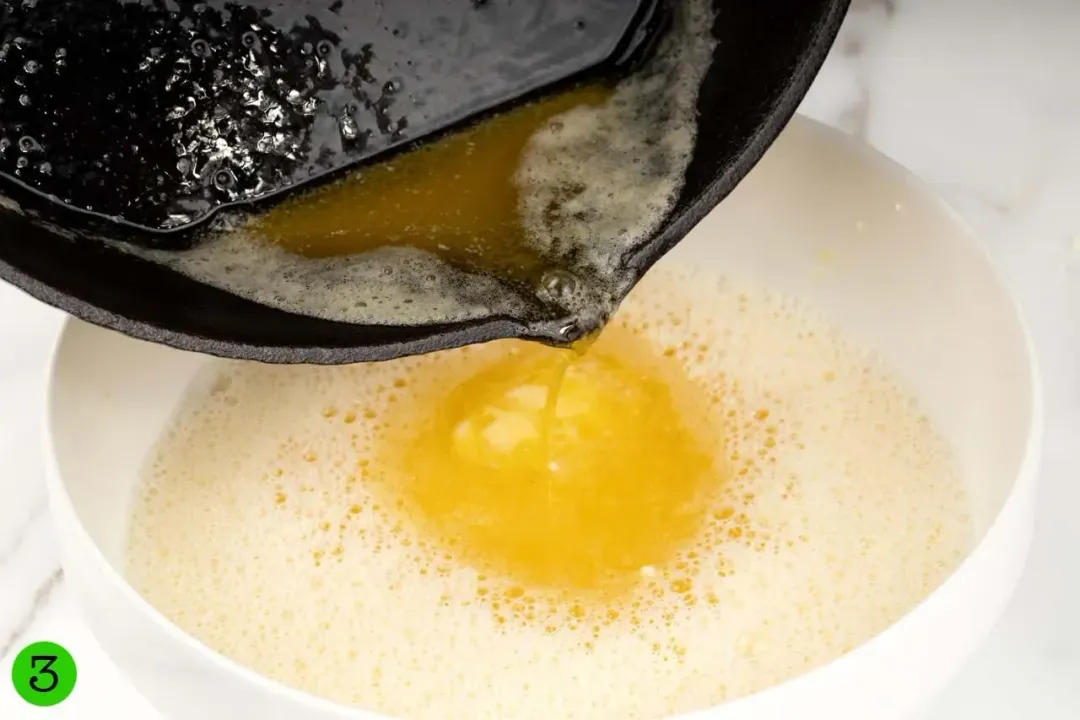
Pour the dry ingredients into the wet ingredients. Whisk until combined. Avoid over-mixing. Then stir in 1 cup dried cranberries and 2 oz sliced almonds.
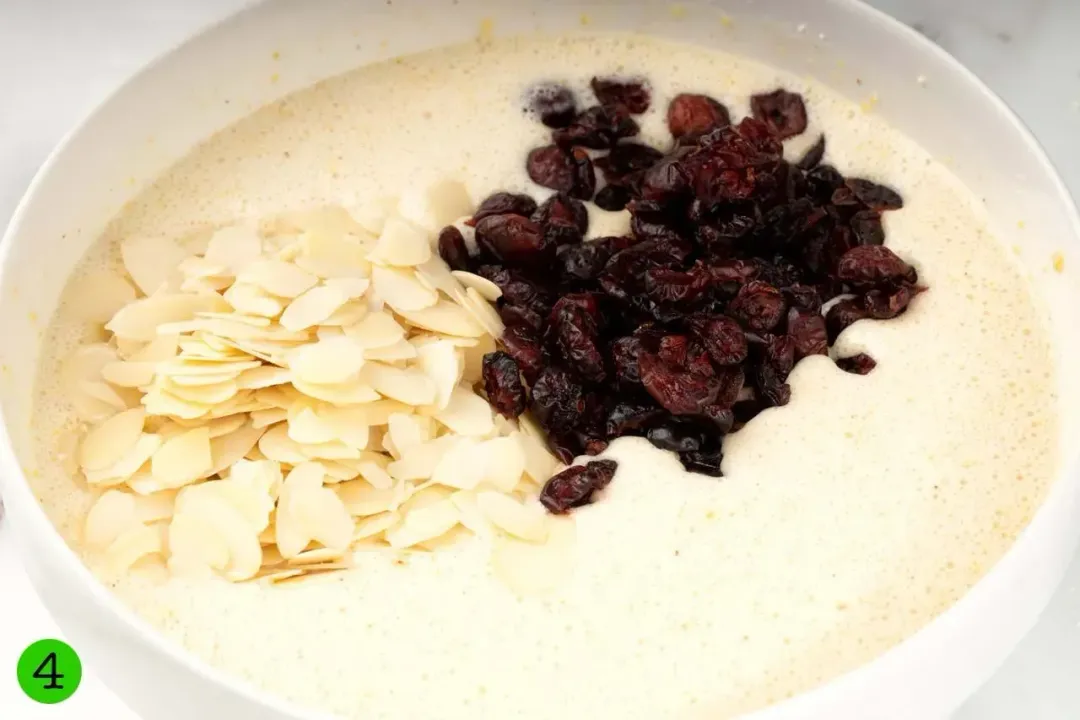
Pour the batter into the cast-iron pan. Bake for 40 minutes or until it is golden brown on top and the center is cooked through.
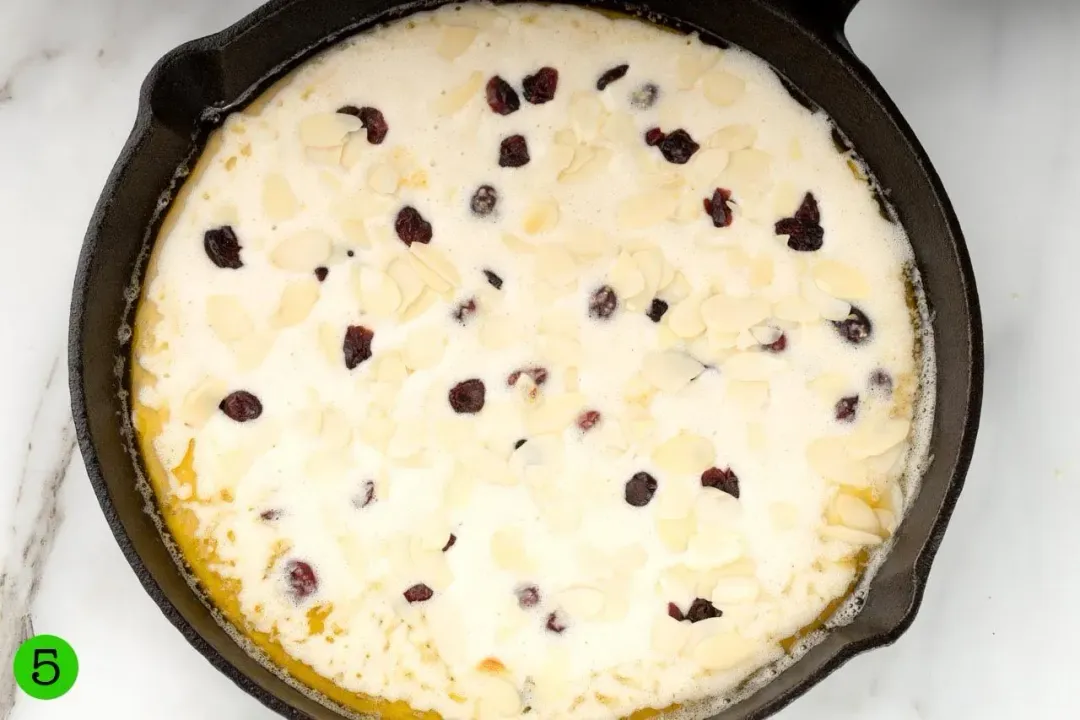
Use a brush to coat 1 tbsp honey over the top of the bread.
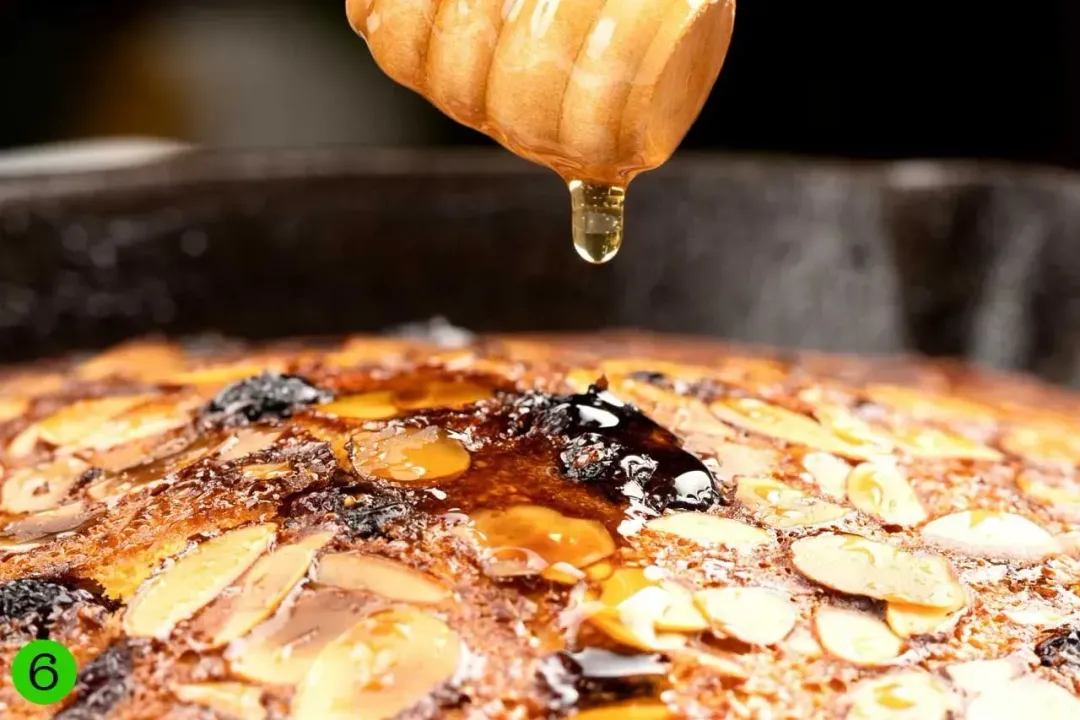
Serve warm.
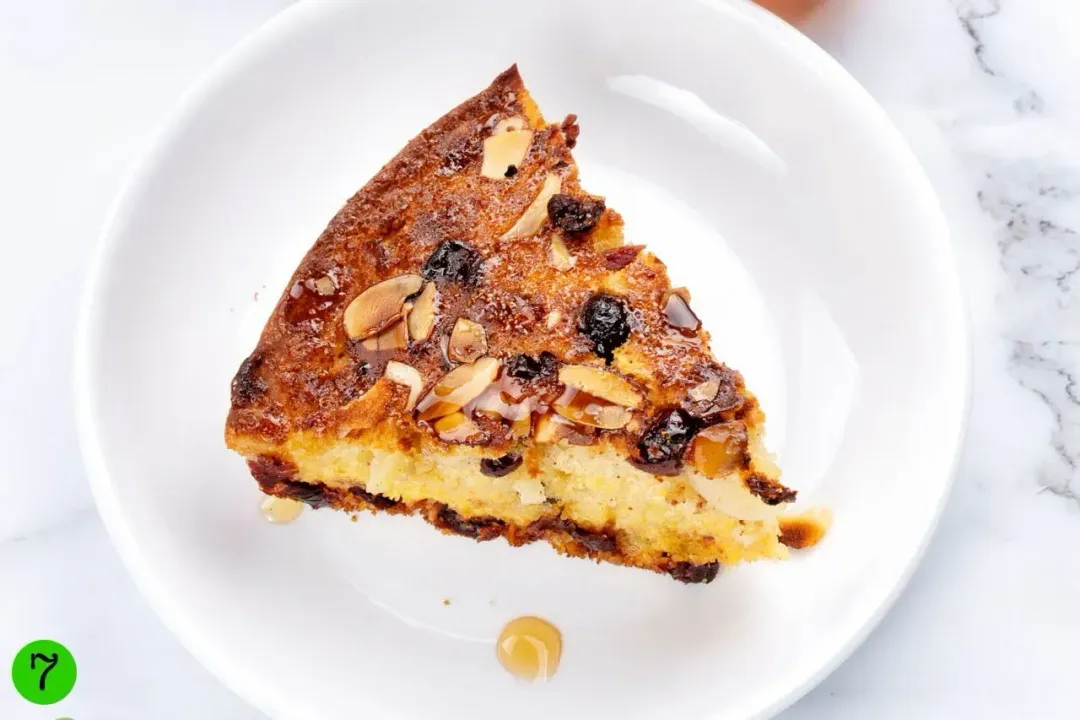
NUTRITION
Tuyet Pham
Head Chef, Culinary ConsultantLuna Regina
Writer, AuthorLizzie Streit, MS, RDN, LD
Nutrition Reviewer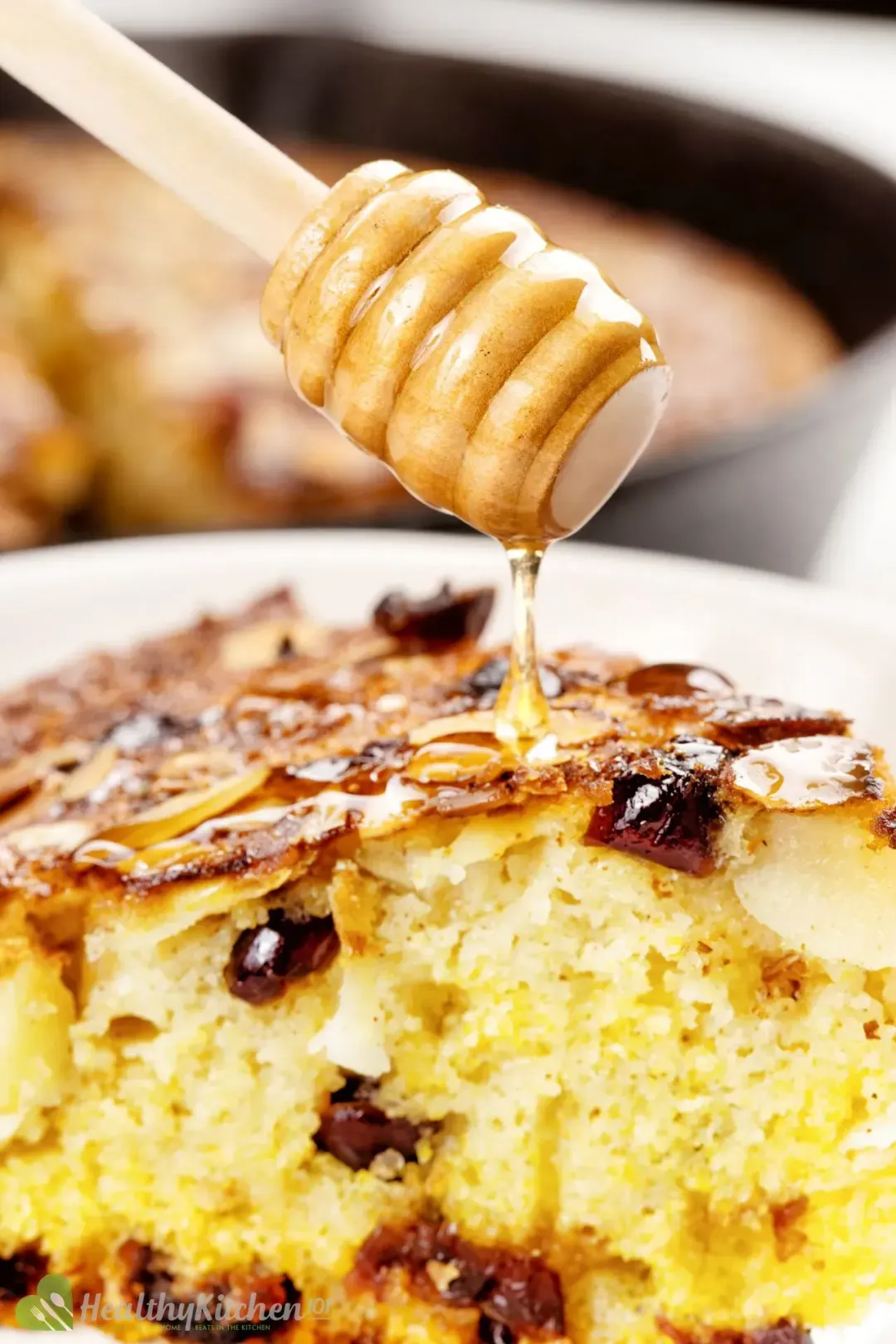
- SchallerPerfect side dish for your next meal! The addition of buttermilk adds flavor and texture to this classic recipe.
